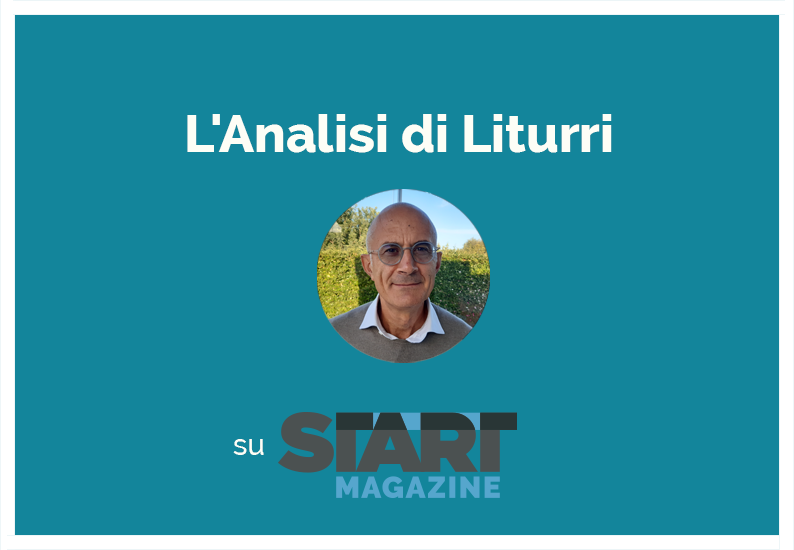All the catches in sight for the PNRR

Pnrr: the objectives, the real pitfalls and scenarios (not all positive). Giuseppe Liturri's analysis
Concerns are beginning to emerge here and there about the infernal mess into which our country has gotten itself, adhering to the investment plan "for recovery and resilience" conceived by the Commission.
Until yesterday we were a small minority. In recent weeks, the debate has also reached the major national press .
In fact, signs of intolerance for a suit that is too rigid and built according to guidelines common to all 27 countries, without taking into account individual specificities, have become more and more frequent. There are even those who have discovered that it is a question of debt and, for this reason, it is a question of sums that should be concentrated on high-multiplier spending items.
We reiterate once again that the opportunity to make public investments is not contested here, but the method used which involves obvious and hidden costs, capable of weakening its effectiveness for Italy. In fact, the investments financed by 69 billion in subsidies and 121 billion in loans will be just enough to bring their incidence back to the GDP equal to what our country already had before the crisis of 2009. So nothing transcendental: after the bankruptcy 2012-2019 season made up of austerity, cuts and asphyxiated growth, it took Covid to realize that the country was falling apart. But, as stated several times, it is the conditions to which we must submit that strongly question its expediency.
The devil is in the details. It is a detailed roadmap made up of just over 500 objectives and intermediate goals, adopted by decision by the EU Council in July 2021, then transferred to a ministerial decree signed by Minister Daniele Franco in August and finally crystallized into an operational agreement ( operational arrangement ) signed last December 22 between the latter, on behalf of the Italian Republic, and the EU Commission, in the person of Commissioner Paolo Gentiloni.
All the objectives and targets are meticulously presented here, broken down by semester of expected achievement (from the second in 2021 to the first in 2026). Observing only 2022, fulfilling those commitments means for Italy to release the reimbursement (because it is a reimbursement, since the expenses are financed in the first instance with national funds already allocated) of approximately 46 billion (23 subsidies and 23 loans) and so on until mid-2026. This is the final seal on the tight straitjacket around our country to make sure it does all that is expected quickly and well. That agreement contains a rigorous and timely consultation mechanism between the Commission services and the body set up at the Mef for the coordination of PNRR ( Central Service for PNRR ). Quarterly meetings to check the progress of the projects and any problems in their implementation, technical discussions that the Commission may request, with very close frequencies, to interact directly with the various Italian bodies in charge of implementing the measures, a constant flow of information from Rome to Brussels with full access by the Commission to the entire database certifying the execution of the investments.
To be sure of having tightened the chains well, in the agreement there is also the discipline of the massive reporting that must constantly flow towards the Commission. As part of the European Semester, Italy must report the progress of the execution of the agreements on 30 April and 15 October of each year. But it doesn't stop there. Every 28 February and 31 August, as many as 14 indicators relating to the six pillars of the PNRR (green, digital, cohesion, health, etc.) must be evaluated. It ranges from new health facilities to the new installed capacity of renewable energy.
Admitted and not granted to be able to pass unscathed from these caudine forks, the agreement of December provides that, as progress is made in the achievement of objectives and half-yearly goals, payments remain conditional on the absence of steps backwards on the objectives already reported in past. So a hypothetical new government in office from 2023 that wants to change its mind, for example, on the reform of civil or criminal justice, will have its hands tied.
One of the first stumbling blocks was the increase in the maximum threshold for cash payments from € 1000 to € 2000, which took place last week with an amendment to the Milleproroghe. The fight against the use of cash accompanied by the cashless incentive is considered – despite the empirical evidence being quite controversial – the workhorse for the fight against tax evasion. On this front, the PNRR foresees that at the end of 2025 it must be reported that in 2023 there was a 5% cut in the propensity to evasion compared to 2019 and that, by June 2026, the decrease measured in 2024 will be at least 15%. It will have to go down from 18.5% in 2019 to 15.7% in 2024. Such a challenging goal that it is unlikely that it will be jeopardized only by micro-evasion favored by the use of cash. Nonetheless, the fight against the use of cash remains the panacea for all ills.
And these are only the first signs. When the commentators flattened on the fable of the "rain of billions given away by Europe", will measure the other hidden costs (not least the recession induced by compliance with the rules of the Stability Pact, an essential condition for the collection of the installments), it will only be a awakening. The more abrupt, the later it arrives.
(extended and updated version of an article published in the newspaper La Verità)
This is a machine translation from Italian language of a post published on Start Magazine at the URL https://www.startmag.it/economia/tutti-gli-inghippi-in-vista-per-il-pnrr/ on Sun, 27 Feb 2022 08:56:55 +0000.
